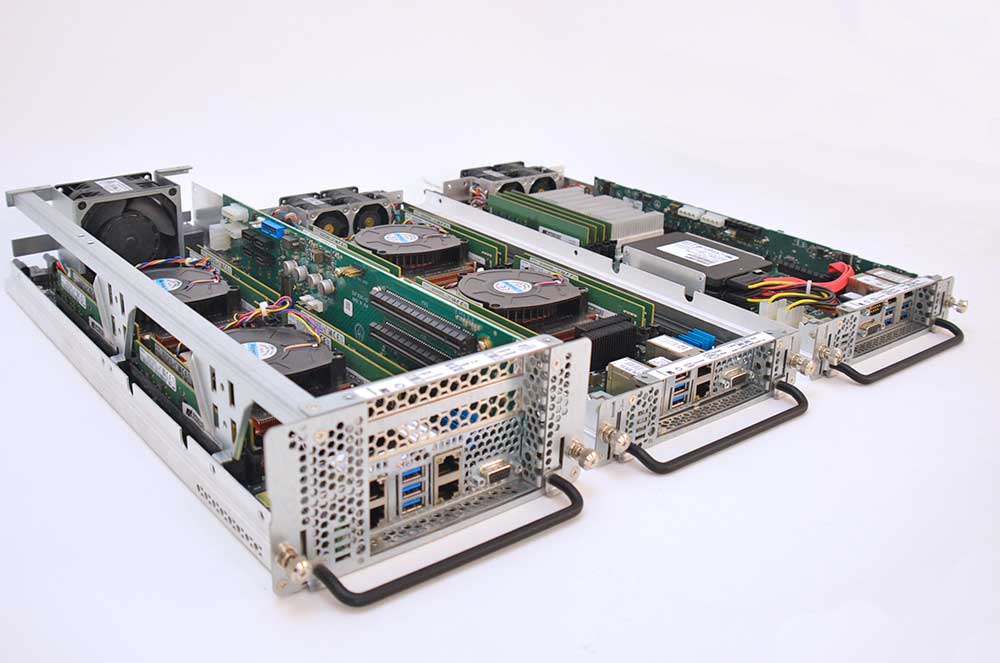Introduction
The title “Unlocking the Potential of Blade Server Clusters” hints at an exploration of the untapped capabilities and advantages offered by blade server clusters in the realm of information technology. Blade server clusters are a modern and efficient approach to data center infrastructure, and this title suggests that there are hidden opportunities or benefits within this technology that are yet to be fully realized.
In this context, the content is likely to delve into the various ways in which organizations can harness the power of blade server clusters to optimize their operations, enhance scalability, improve resource utilization, and potentially revolutionize their IT infrastructure. The following text would provide a detailed exploration of these possibilities.
Understanding Blade Server Clusters
Blade server clusters represent a sophisticated and streamlined approach to managing and optimizing server resources in data centers.
1. Blade Servers:
Blade servers are compact, self-contained servers that include processors, memory, storage, and networking components. These servers are designed to be installed in a common chassis, sharing power supplies, cooling systems, and network connections. The modular nature of blade servers allows for high-density computing, meaning a large number of servers can be accommodated in a relatively small physical space.
2. Chassis:
The chassis serves as a common enclosure that houses multiple blade servers. It provides power, cooling, and networking infrastructure to the individual blades. Blades can be easily inserted or removed from the chassis, allowing for quick scalability and maintenance without disrupting the entire system.
3. Networking and Interconnects:
Blade server clusters are equipped with integrated networking components. These components facilitate communication between individual blade servers and enable data transfer within the cluster. High-speed interconnects such as Ethernet or InfiniBand are commonly used to ensure fast and efficient data exchange.
4. Management Modules:
Blade server clusters come with management modules that allow administrators to monitor and control the entire cluster from a central interface. This centralized management simplifies server provisioning, monitoring, and troubleshooting tasks. It also enables remote management, making it easier to manage geographically dispersed data centers.
Advantages of Blade Server Clusters
Space Efficiency:
Blade servers’ compact form factor allows for significant space savings in data centers, making them ideal for environments where space is limited.
Energy Efficiency:
Sharing common resources such as power supplies and cooling fans reduces overall power consumption, leading to energy savings.
Scalability:
Blade server clusters are highly scalable. Additional blades can be added to the existing chassis, enabling seamless expansion of computing resources.
Simplified Management:
Centralized management interfaces simplify server administration tasks, reducing the time and effort required for server maintenance.
Cost-Effectiveness:
While initial setup costs might be higher, the long-term cost savings in terms of energy efficiency and space utilization make blade server clusters cost-effective over the lifespan of the infrastructure.
Future Trends in Blade Server Clusters
The field of blade server clusters is continuously evolving to meet the growing demands of data centers and IT infrastructure.
Higher Density and Efficiency:
Future blade server clusters will likely feature even higher server density, enabling data centers to host more computing power within a smaller footprint. Improved power efficiency will be a key focus, reducing operational costs and environmental impact.
Advanced Cooling Technologies:
To cope with the increased density of blade servers, innovative cooling solutions will become crucial. Liquid cooling, advanced air cooling techniques, and thermal management innovations will be deployed to maintain optimal operating temperatures.
Enhanced Networking Capabilities:
Blade server clusters will incorporate faster and more robust networking technologies, such as 400Gbps and beyond, to handle the increasing data transfer demands of modern applications and workloads.
Integration with Edge Computing:
As edge computing becomes more prevalent, blade server clusters may find applications at the edge, enabling processing and data analysis closer to the data source. This will require ruggedized and compact blade server solutions tailored for edge environments.
Security Features:
With the growing importance of data security, blade server clusters will integrate advanced security features, including hardware-based encryption, secure boot processes, and enhanced access controls, to protect critical data and applications.
Artificial Intelligence (AI) and Machine Learning (ML):
Blade server clusters will be optimized for AI and ML workloads, leveraging GPUs, TPUs, and other accelerators to accelerate deep learning tasks. AI-driven analytics will also play a role in optimizing resource allocation and performance.
Modular and Composable Infrastructure:
Future blade server clusters may adopt more modular and composable infrastructure designs. This allows for even greater flexibility in configuring and reconfiguring resources to meet specific application requirements.
Hybrid and Multi-Cloud Compatibility:
Blade server clusters will be designed with hybrid and multi-cloud compatibility in mind, enabling seamless integration with public cloud services and private cloud environments for hybrid cloud deployments.
Sustainability and Green Computing:
Eco-friendly considerations will continue to gain importance. Blade server clusters will incorporate sustainable materials, energy-efficient components, and recycling programs to reduce their environmental impact.
Quantum Computing Integration:
As quantum computing technology advances, blade server clusters may be adapted to support quantum computing resources, allowing organizations to harness the power of quantum computing alongside traditional computing resources.
Automation and Orchestration:
Automation and orchestration capabilities will be enhanced, streamlining provisioning, scaling, and management of blade server clusters through intelligent automation and AI-driven decision-making.
Edge-to-Cloud Integration:
Blade server clusters will play a role in bridging the gap between edge devices and centralized cloud resources, facilitating seamless data flow and processing across the entire network continuum.
Security in Blade Server Clusters
Security in blade server clusters is paramount, as these clusters often host critical applications, sensitive data, and form the backbone of an organization’s IT infrastructure. Ensuring the security of blade server clusters involves a multi-layered approach to protect against various threats and vulnerabilities.
Physical Security:
- Access Control:
Restrict physical access to the data center or server room housing the blade server cluster. Implement secure access controls such as biometric authentication, card readers, and surveillance cameras.
- Environmental Controls:
Maintain proper environmental controls to prevent damage from temperature fluctuations, humidity, and other environmental factors.
Server Hardware Security:
- Tamper-Evident Hardware:
Use tamper-evident seals and hardware that can detect unauthorized physical access or tampering with individual blade servers.
- Trusted Platform Module (TPM):
Enable TPMs on servers to enhance hardware-based security for encryption and authentication.
Network Security:
- Network Segmentation:
Segment the network to isolate blade server clusters from other parts of the network, limiting the lateral movement of attackers.
- Firewalls and Intrusion Detection Systems (IDS):
Deploy firewalls and IDS/IPS solutions to monitor and filter network traffic going to and from the blade server cluster.
- Virtual LANs (VLANs):
Implement VLANs to logically separate traffic and enhance network security.
- Encryption:
Encrypt data in transit using secure protocols like TLS/SSL.
Authentication and Access Control:
- Strong Authentication:
Require strong authentication methods for accessing the blade server cluster, such as multi-factor authentication (MFA) or certificate-based authentication.
- Role-Based Access Control (RBAC):
Implement RBAC to control and limit user and administrator access to specific resources and functions.
- Audit and Logging:
Enable detailed logging of all access and administrative activities for auditing and forensics purposes.
Operating System Security:
- Patch Management:
Regularly update and patch the operating systems and software on the blade servers to address known vulnerabilities.
- Antivirus/Antimalware:
Deploy antivirus and antimalware software to scan for and remove malicious code.
- Hardening:
Apply security hardening guidelines and best practices to the server operating systems to reduce attack surfaces.
Data Security:
- Data Encryption:
Encrypt sensitive data at rest using disk-level encryption or file-level encryption.
- Data Backups:
Implement regular data backups and test data recovery procedures to ensure data availability in case of disasters or data breaches.
Monitoring and Detection:
- Security Information and Event Management (SIEM):
Use SIEM solutions to centralize and analyze security logs and events for early threat detection.
- Intrusion Detection and Prevention:
Deploy intrusion detection and prevention systems to detect and respond to security threats in real-time.
Incident Response Plan:
- Develop and maintain an incident response plan that outlines procedures for handling security incidents and breaches in the blade server cluster environment.
Employee Training and Awareness:
- Provide security training and awareness programs for employees and administrators to educate them about security best practices and potential threats.
Regular Security Audits and Penetration Testing:
- Conduct regular security audits and penetration testing to identify vulnerabilities and weaknesses in the blade server cluster environment.
Vendor and Supply Chain Security:
- Assess the security practices of blade server and chassis vendors to ensure that the hardware components are secure throughout the supply chain.
Compliance:
- Ensure that your blade server cluster environment complies with relevant industry standards and regulations, such as GDPR, HIPAA, or ISO 27001, depending on your organization’s requirements.
Conclusion
In conclusion, blade server clusters represent a powerful and efficient solution for managing compute resources in modern data center environments. These clusters offer a compact and scalable infrastructure that can significantly enhance an organization’s IT capabilities. However, it’s crucial to emphasize that their successful implementation requires careful consideration of various factors, including physical security, network security, authentication and access control, operating system security, data protection, monitoring, and incident response.
To maximize the benefits of blade server clusters while minimizing security risks, organizations should adopt a comprehensive security strategy that encompasses both hardware and software elements. This strategy should prioritize physical security measures to protect against unauthorized access and tampering. Network security should be robust, with strict access controls and encryption to safeguard data in transit. Strong authentication, access controls, and regular patch management should be enforced to mitigate software-related vulnerabilities.












Leave a Reply